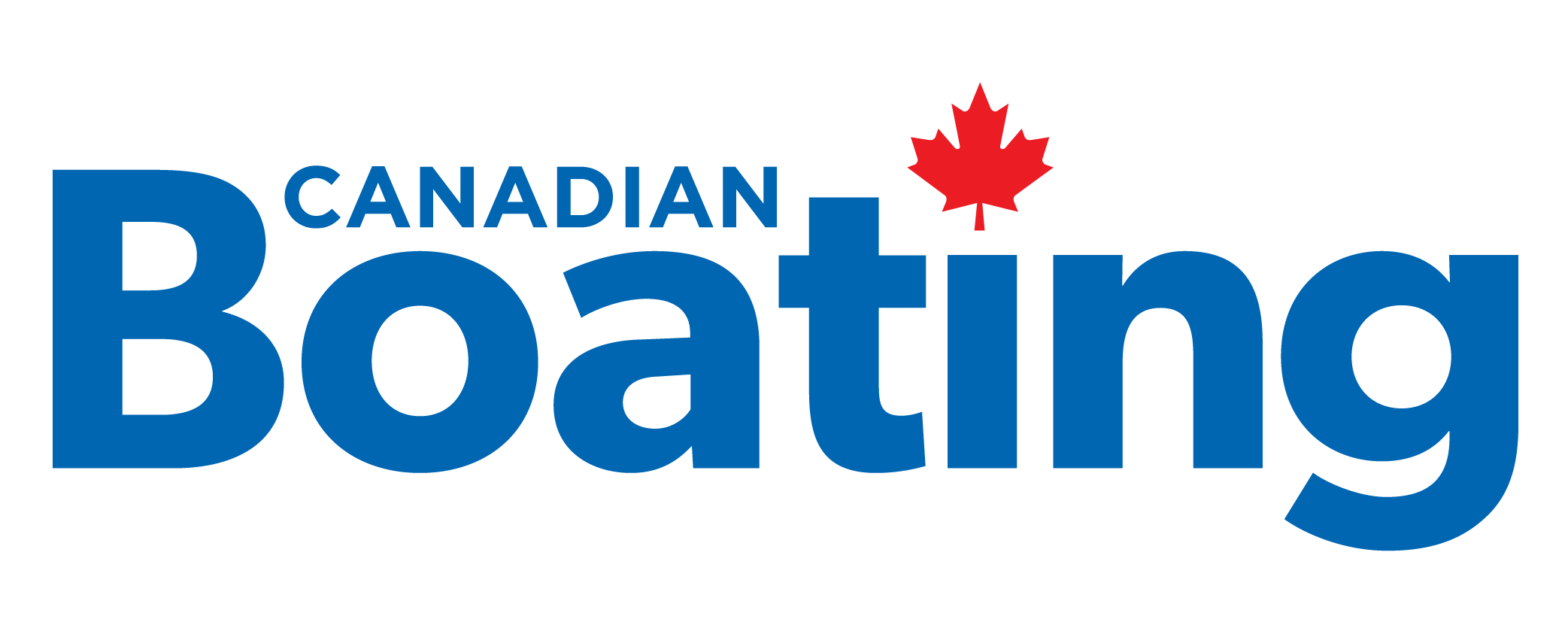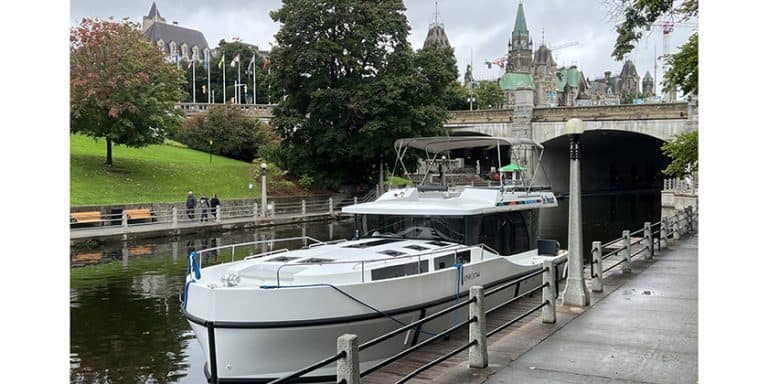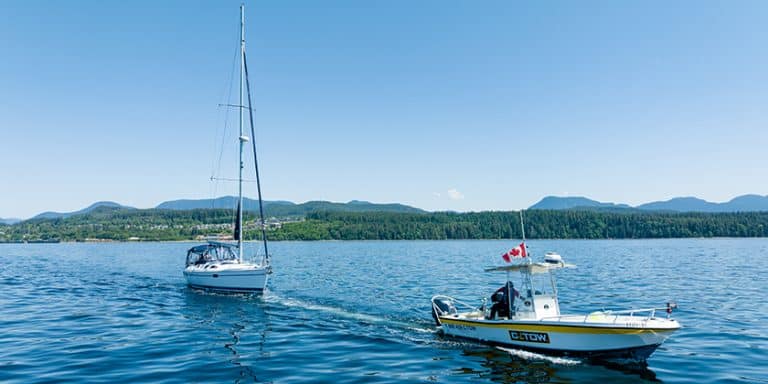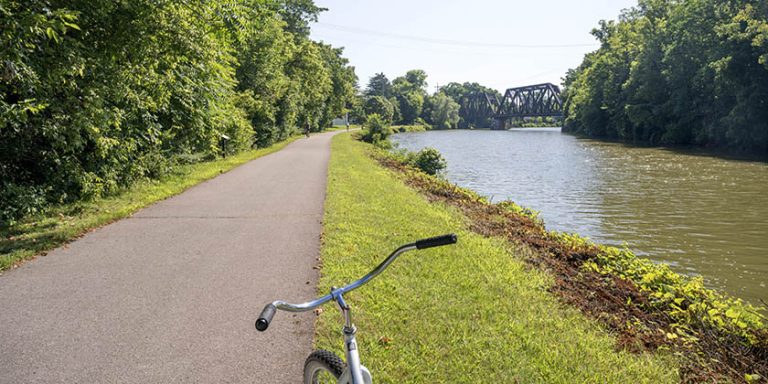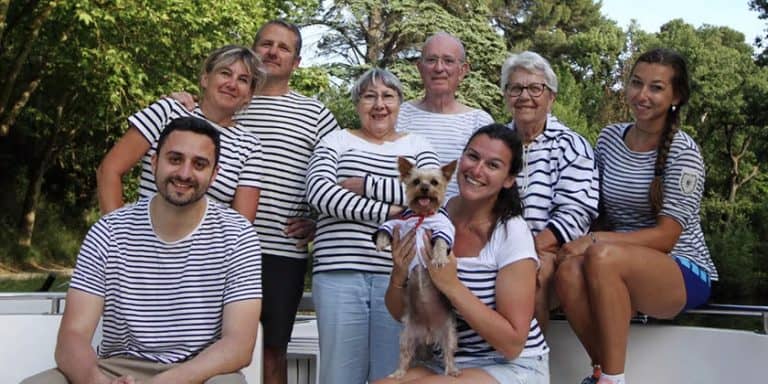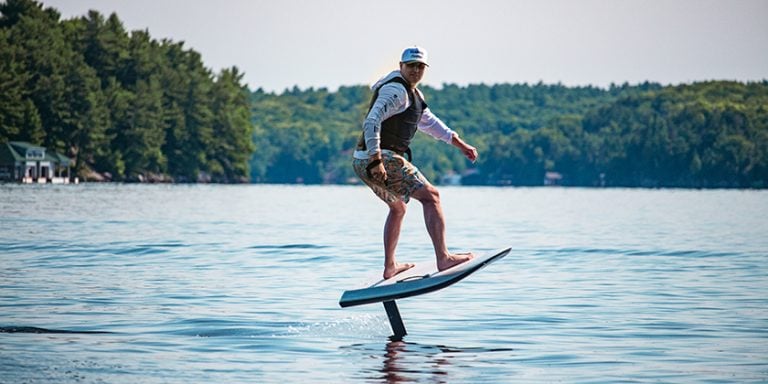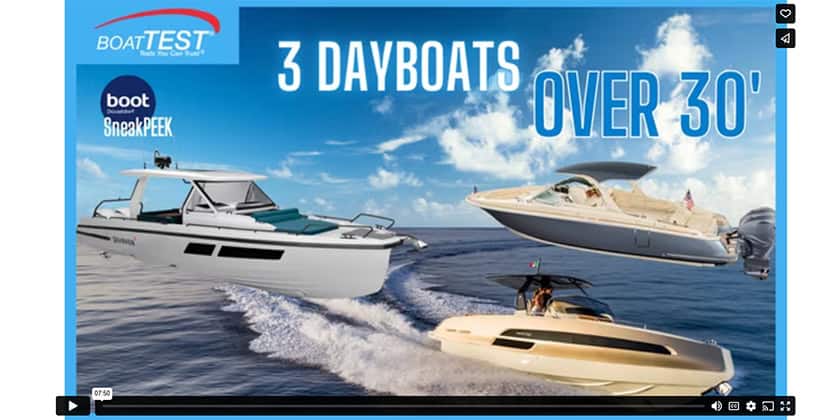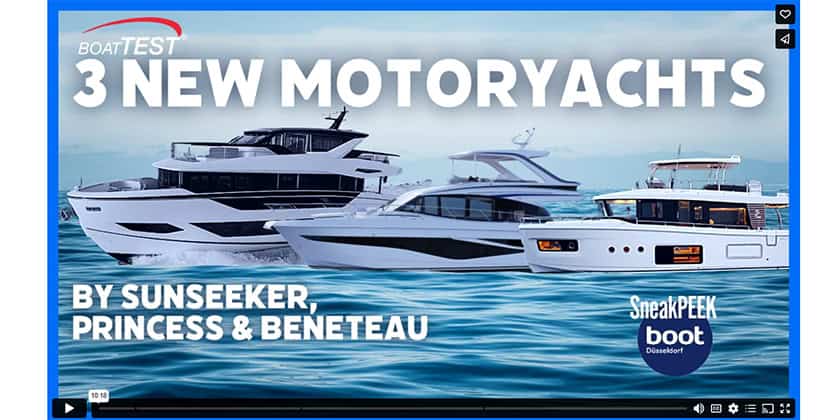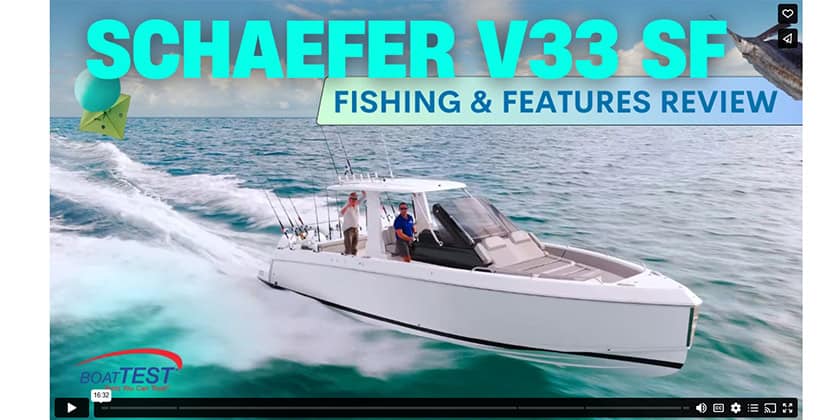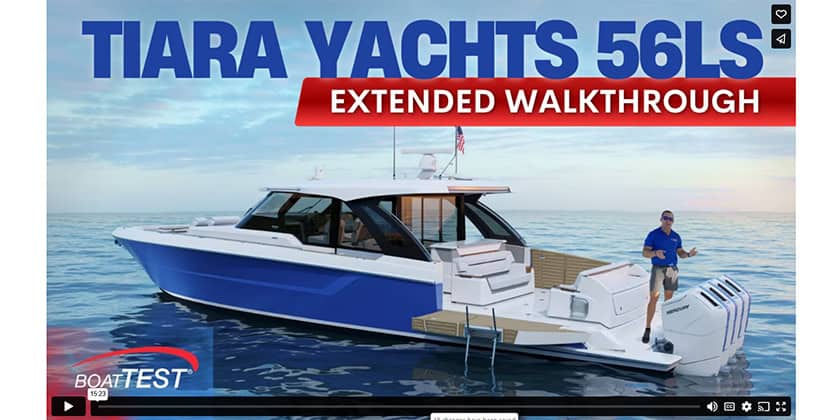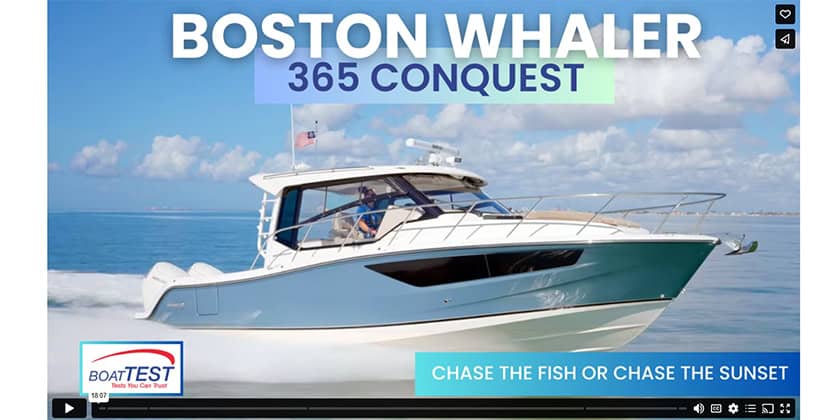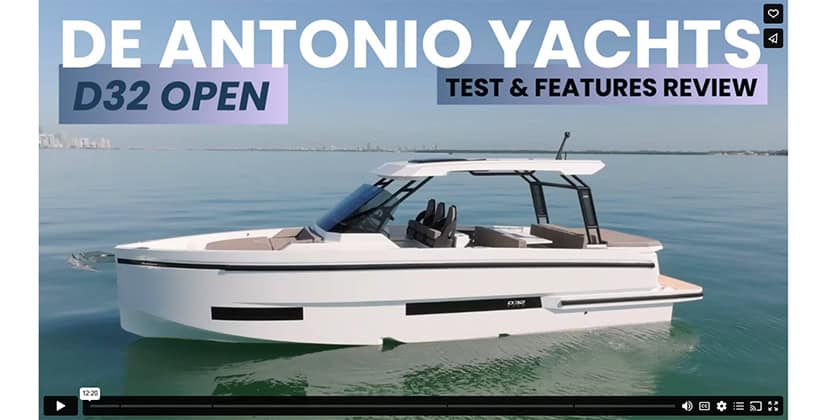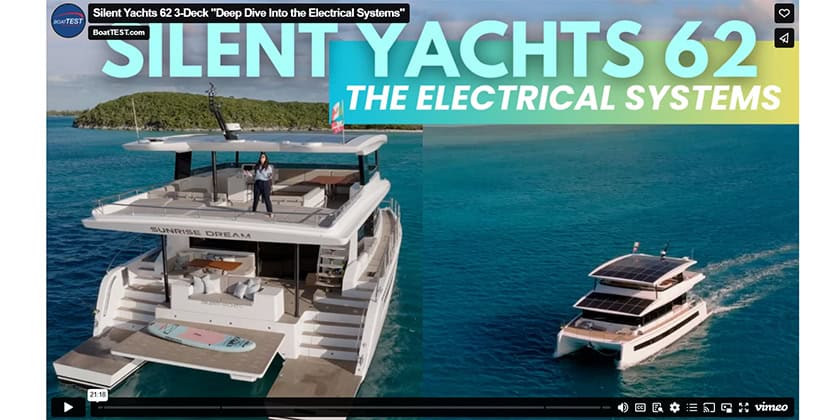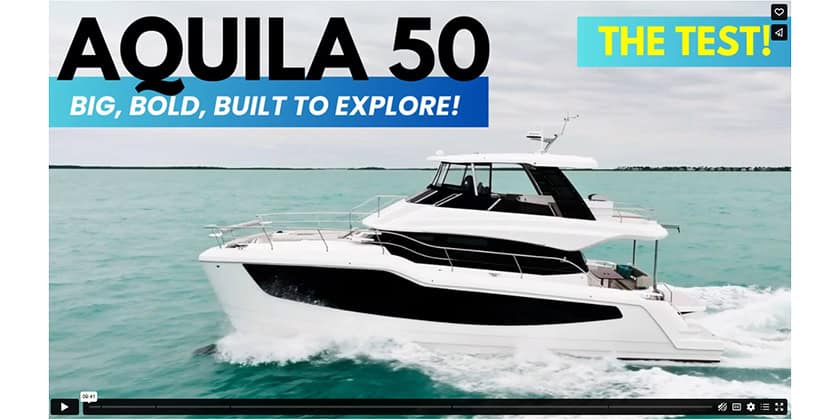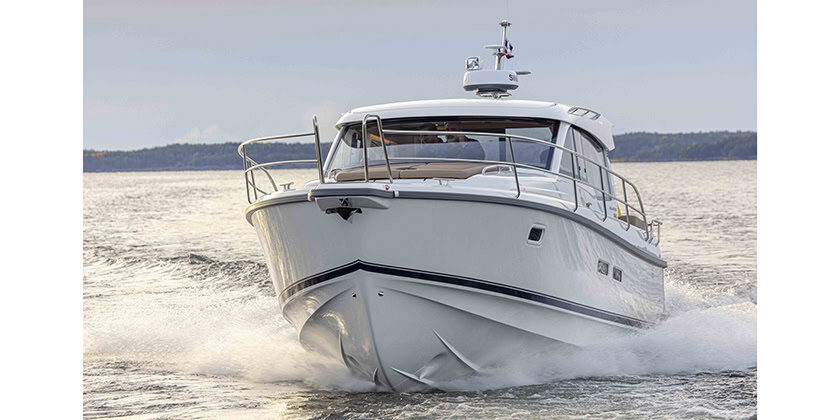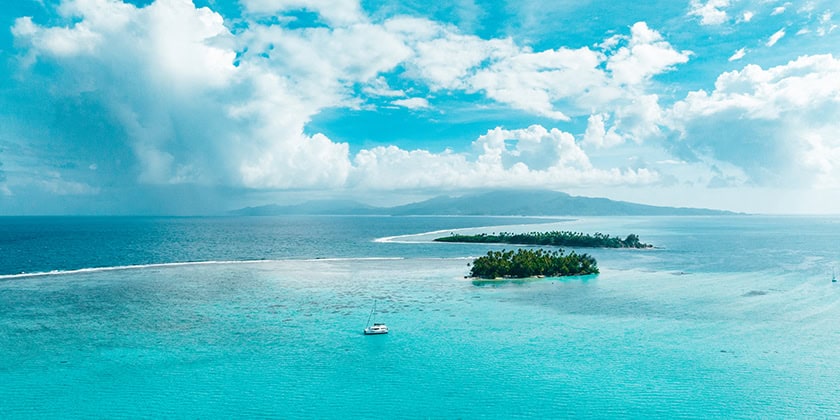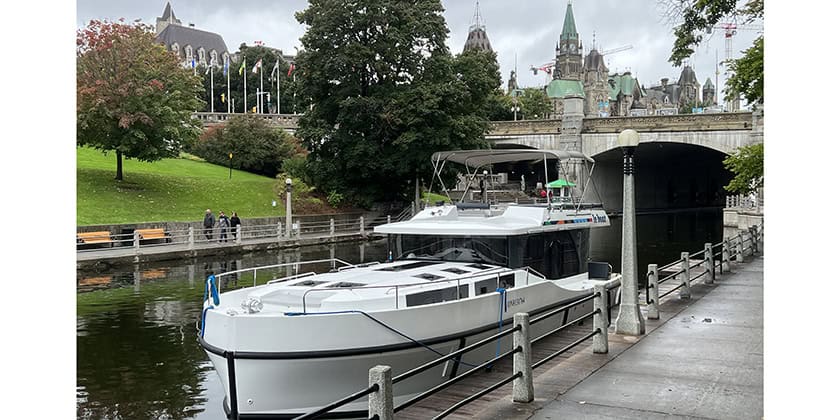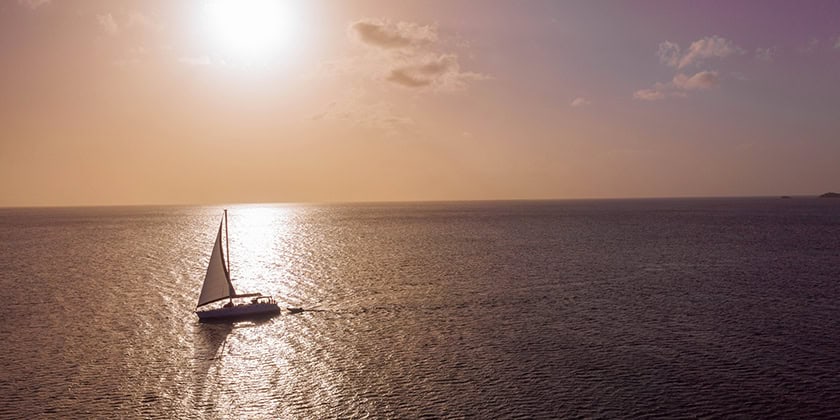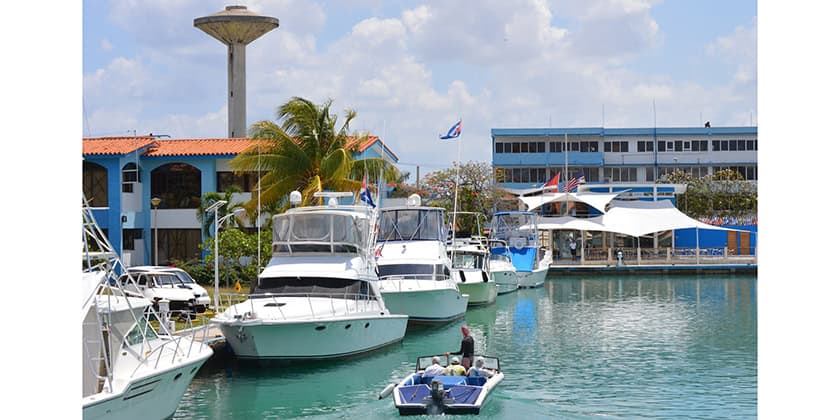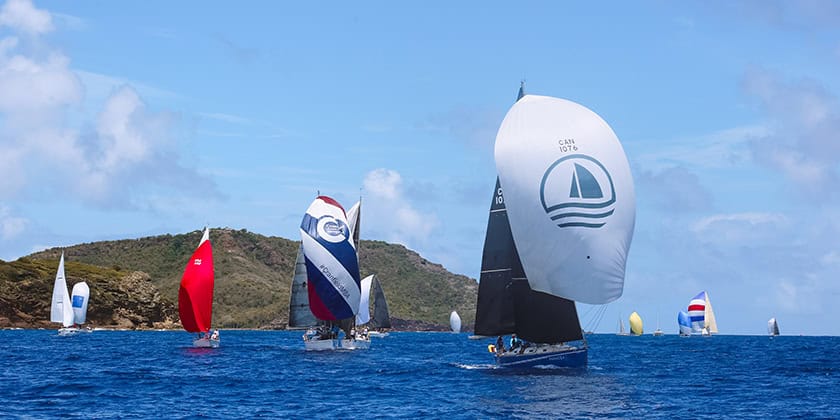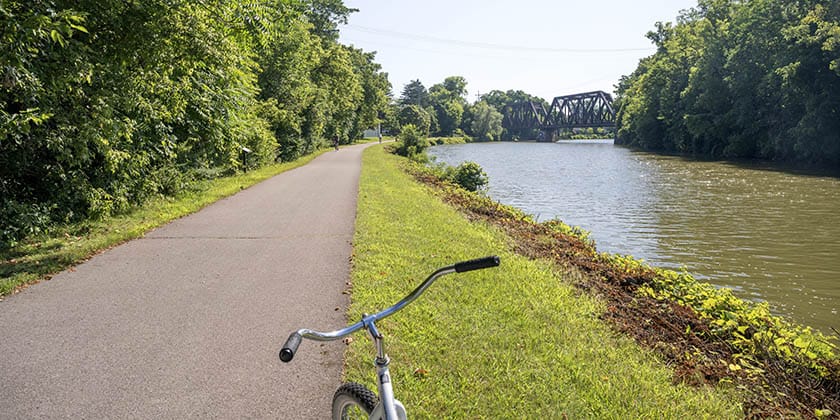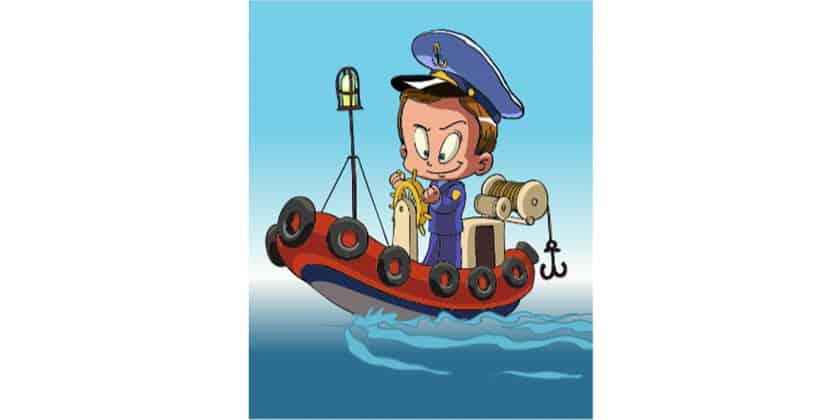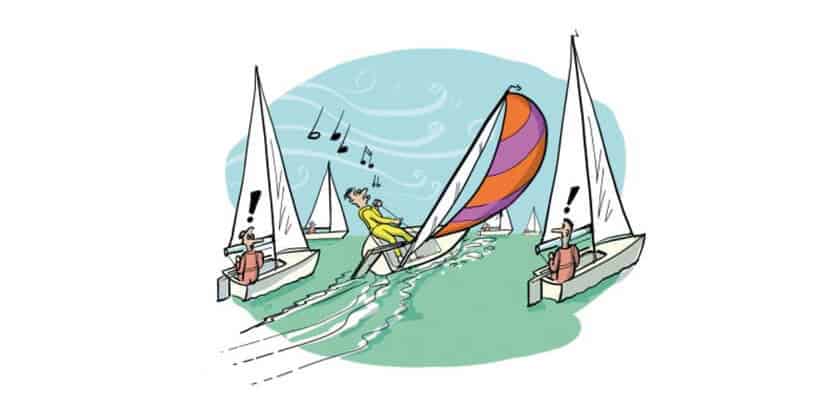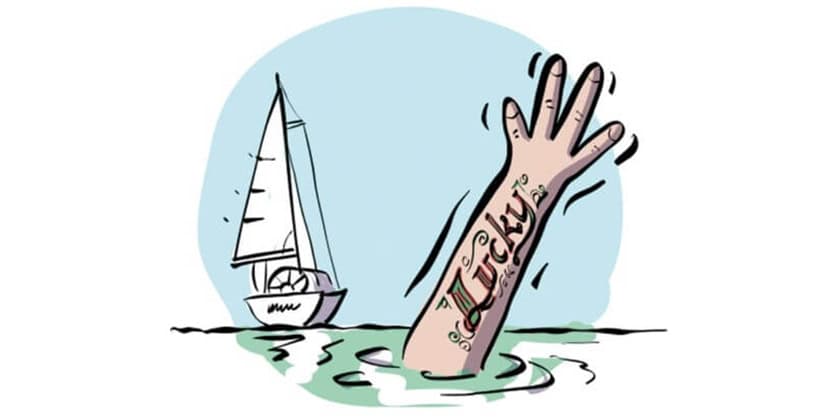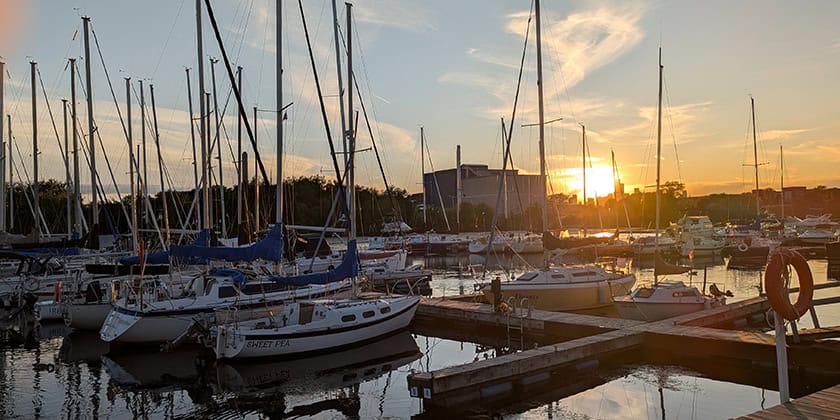Destination: Trent Severn Waterway ONE MORE TIME!
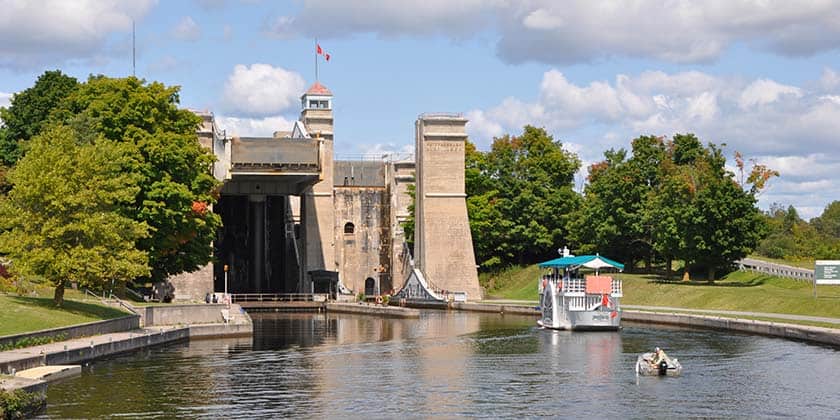
By Greg Nicoll
Photos by Andy Adams and friends
Just when you thought you might never see the Galley Guys again, there they were waving from the flying bridge of a Le Boat Horizon 3 gliding down the Trent Severn Waterway (TSW) in the sun. Glorious!
In the past the Galley Guys have travelled far and wide to great locations to explore the good life on a boat. However, this year we stayed in our own backyard for a real treat; cruising The Trent Severn Waterway. This was the inaugural year of operations for Le Boat on the Trent Severn, and we knew we needed to give it a try. Our first Le Boat trip in Canada was on the Rideau Canal two years ago and it was great fun!
For this trip we chose Le Boats’ Horizon three-cabin model. Each cabin is well laid out and has its own head with a shower. The best parts of these boats are the entertainment areas: a well-appointed galley with a large dining table in the cabin, the flying bridge lounging area and an upper dining table. One of the Galley Guy mottos is “everything tastes better al fresco”, so we dined as often as we could on the upper deck.
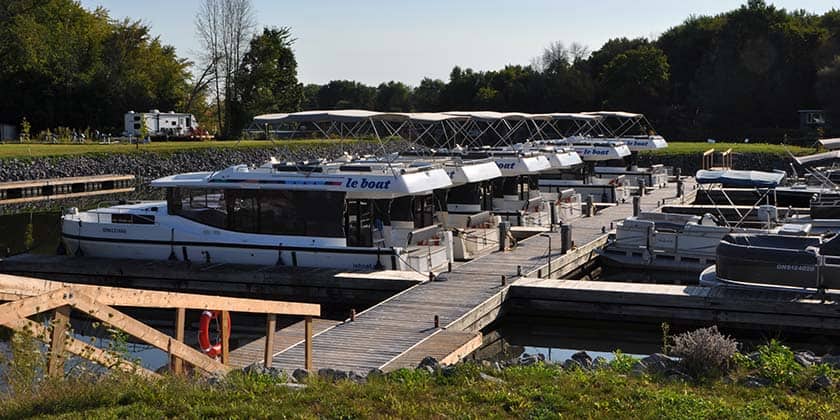
The Galley Guys have piloted all sorts of boats; power, sail, fresh water, blue water, but that didn’t matter! Le Boat has a “no experience needed” policy and they designed their boats to be simple to drive. Hull-side fenders offer protection when docking and the boats do not exceed 5-6 knots top speed. Bow and stern thrusters make these big comfortable cruisers easy to dock and maneuver. They can turn around in about their own length! The staff take customers out for an orientation for as long as they need to be comfortable and have a pleasurable experience. The Horizon has an almost flat bottom to draw little water and to keep the boat very stable at all times.
The Trent-Severn Waterway is incredibly beautiful. In our travels we have spoken to several “Great Loopers” who say that The Trent-Severn Waterway is the best part of the Great Loop circuit. This historic waterway that connects the Kawartha Lakes is an amazing journey of natural beauty. The waterway covers 386 kilometers and offers an incredible array of natural wonders and engineering achievements. The scenic rivers, beautiful lakes and canals show off the true essence of Central Ontario.
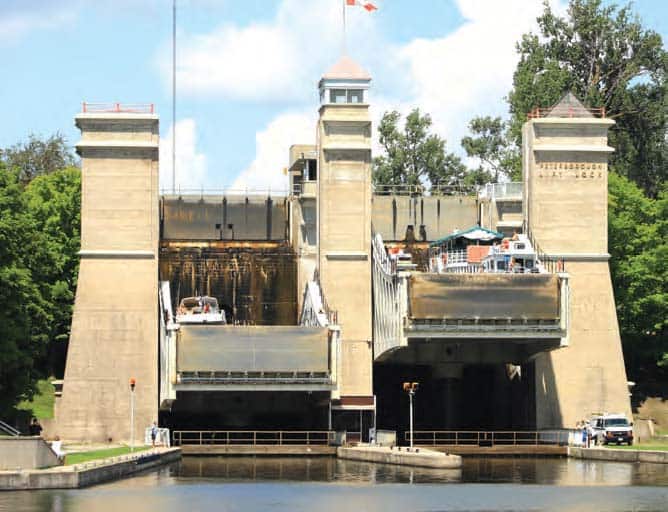
Le Boat’s TSW base is conveniently located just a short drive outside the community of Peterborough, along the Otonabee River at the Horse Bay Marina. We boarded the Horizon and headed north through Little Lake in Peterborough, marveling at the famous Peterborough Hydraulic Lift Lock, the highest lift lock in the world (19.8m). All locks on the TSW are maintained by Parks Canada personal, who were a delight to speak to. If you ask for their help, you will be offered lots of suggestions to make your experience even better. One must remember that the TSW is a National Historic Site of Canada that opened in 1922. There were none of those push button locks that we experienced in Europe. Each time the chamber is filled or drained it is done by Parks Canada staff, often by hand turning a large drum that opens the lock gates.
As usual, Skipper John took the helm, Navigator Katie told us where to go, Greg and Andy were deckhands and Galley Queen Linda kept us all rewarded for our efforts. Going through locks can be a wonderful family experience with everybody having an important job and feeling like part of the team.
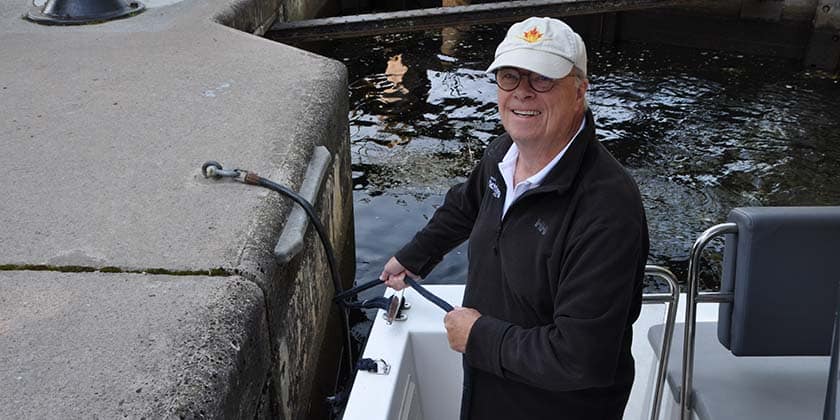
We spoke with one Parks Canada member about seeing a Le Boat boat going through the lock. There were some interesting stories, but they assured us that “Le Boaters” seem generally well educated and careful.
When waiting to enter a lock, it is best to temporarily tie up to the blue painted wall. This indicates to the lock master your intention to enter. When given the signal, move slowly to the recommended placement in the lock, then loop your bow line and your stern line around the vertical black cables affixed to the lock wall. The lines will slide up or down the cable when ascending or descending, keeping your boat in its correct position.
The thrusters that Le Boat boats are equipped with make maneuvering in the lock much easier. Skipper John recommends practicing with the thrusters a few times before your first lock just to get the feel of it.
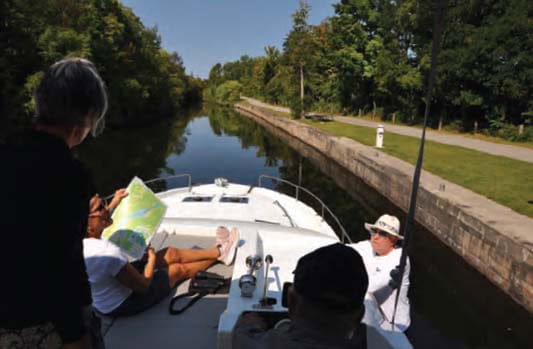
We spent most nights tied up to bollards beside the locks, but there are also some great anchorages where you can spend a quiet evening on your own and live the Canadian outdoor dream. A mandatory fee is included with your Le Boat booking that covers all overnight moorings and lockage fees. Washrooms are readily available at most locks, but shore-power and showers are extra. Also, along the way there are many local commercial marinas that are available for overnight docking.
On route to the Le Boat base, we stopped and purchased food and beverages, but on our cruise we also stopped along the TSW and tied up at the locks. Lakefield, lock 26, was very scenic and we walked to a fantastic butcher shop and a fruit and vegetable market to stock up. We also took note of many interesting restaurants and pubs. The Youngs Point lock had a fine ice cream shop, but the big cone is the Kawartha Dairy Ice Cream in Bobcaygeon at lock 32. Galley Queen Linda did most of the meal prep and she said that our galley came well equipped with all the tools needed to feed the hungry crew.
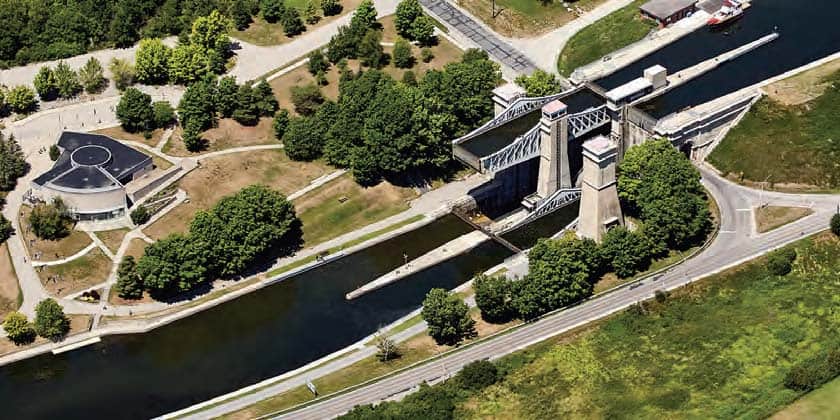
From Parks Canada on Approaching the lock
Obey any posted speed limits between locks or out on the open water. Slow your boat down to a ‘no wake’ speed. Excessive wake can erode the shoreline, damage docked boats and endanger the safety of others. Keep the channel near the lock gates clear to allow boats departing or entering the lock a safe and easy passage.
When approaching locks or swing bridges, the signal to request to enter the lock or to have the bridge opened is three long blasts of five seconds duration from a whistle, horn or siren.
During a lockage, one or both lock gates may be opened for incoming and departing vessels depending on: the size and number of vessels, proficiency of the vessel operators, or wind and wave conditions. In addition, lock staff will open both lock gates when requested to do so by a vessel operator.
The painted blue strip (blue line) above and below each lock is a temporary holding area for boaters wanting to lock through. Tie up at this blue line only if you wish passage through the lock. To avoid the risk of injury: step slowly, do not jump, from the boat to the dock/wall and only after the boat has stopped. Be cautious of uneven surfaces or ‘sink holes’ along the canal walls.
Please be patient if lock staff are not ready to lock you through immediately. They do their best to coordinate upbound with downbound lockage’s and may have water management duties at nearby dams as a first priority.
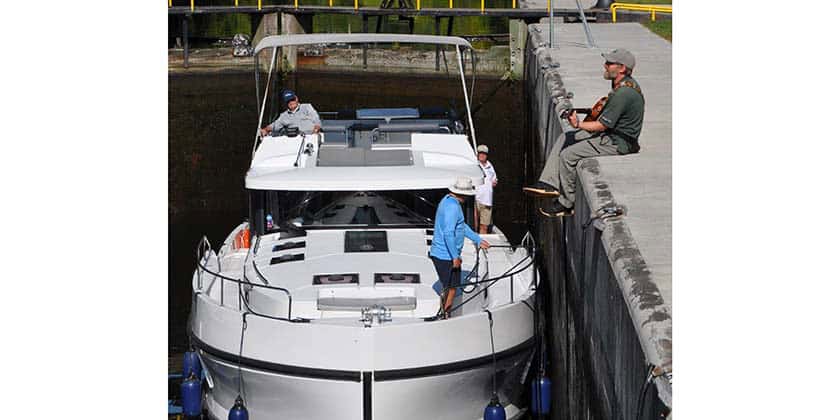
Sometimes you just want to give your head a shake. Turn off the news immediately when getting on board. We greeted or were greeted by everyone on the TSW. I think being nice just comes to everyone locking through the TSW, and whomever we met, it didn’t take long for conversations to get into full swing.
With all our collective years in the boat business you think that you have seen it all, but then a new and radical design pulls up beside you. One day we stayed at a lock and camping just down the path were a group of kayakers. We had a lengthy talk about their objective to do the whole TSW by kayak. We quietly appreciated our sweet home on the water while the kayakers slept in a small tent and carried all their belongings in their kayaks. We said farewell in the morning, but for the next four locks, they kept right up to us.
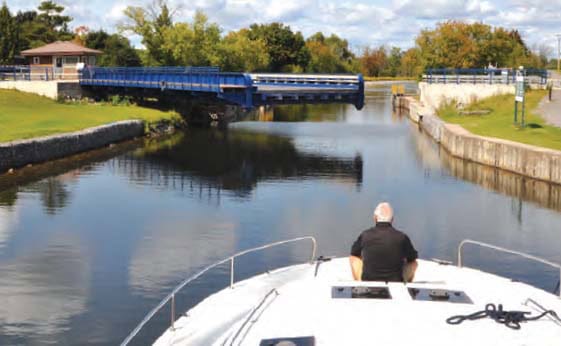
Renting a cottage seems like a great idea but the scenery never changes. Each lock and town has its own story to tell, and you’ll find friendly Parks Canada staff there to welcome you when you arrive. The boat, unlike a motorhome barreling down the highway, is a slow-moving home over crystal waters where you can feel the wind and move at a speed that gives you time to really appreciate the great beauty of this natural setting.
Don’t be surprised to see the Galley Guys out there on your next trip!

